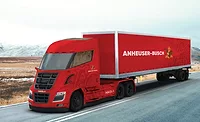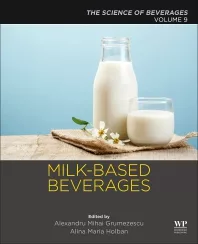New York’s congestion pricing loom over delivery fleets
What impact could first US congestion pricing have on delivery market?

It’s been one of the biggest will-they-or-won’t-they stories in traffic enforcement, one that the commercial delivery fleet industry has been watching closely. Now, it looks like New York’s on-again-off-again flirtation with congestion pricing could very much be on, as the state is poised to implement the policy this month, barring any (expected) legal challenges.
Back in June, days before the original congestion pricing plan was to take effect, New York Gov. Kathy Hochul put the practice on pause indefinitely, noting that the original fees of $15 for passenger cars, $24 for small trucks — like box trucks — and $36 for large trucks would put an undue burden on commuters and businesses.
The new rates — with which Hochul is reportedly now fully onboard — would be 40% lower, at $9 for cars, $14.40 for small trucks, and $21.60 for large trucks. Public works and emergency vehicles would be exempt. Those would be in effect in New York City, particularly high-traffic areas in Manhattan.
The rationale for the charges is that the money raised would help fund public transportation, reduce pollution, and help unclog roadways.
While the concept has plenty of supporters — particularly New York’s Metropolitan Transit Authority (MTA) and advocacy groups like Transportation Alternatives the New York League of Conservation Voters — it has no shortage of opponents. A number of lawsuits against it already have been filed — including by the neighboring state of New Jersey, which argues that such programs should not take effect without a comprehensive review of potential adverse effects on cities and towns that are separated from Manhattan only by the Hudson River.
While New York trucking associations have opposed the congestion pricing plan, Stockholm’s experience has also demonstrated that it may also bring benefits in terms of reduced transit times and improved operational efficiency that exceed the cost.
Incoming President Donald Trump also is a staunch opponent and has vowed to do whatever he can to kill such measures (proponents raced to get all of the tolling infrastructure in place prior to Trump’s Jan. 20 inauguration, to make the system harder to dismantle).
New York is essentially the canary in the coal mine for U.S. cities that are considering congestion pricing. Los Angeles, San Francisco, Portland, Oregon, and Seattle are among the major metro areas that have at least explored the possibility of implementing a similar program. The practice has already been in place in a number of cities overseas, including London, Stockholm, Sweden, Milan, and Singapore.
Of course, the big question for our readers is about what sort of impact it would have on distributors’ bottom lines. Few fleets would be thrilled with the prospect of surcharges to already high tolls that can cut into a company’s profitability. NAFA Fleet Management Association, the trade group that represents the country’s fleet management professionals, is taking a bit of a wait-and-see approach related to congestion pricing measures.
“Congestion pricing will impose additional costs on private fleets in the fee zone,” a NAFA Fleet Management Association spokesperson told Beverage Industry. “While New York trucking associations have opposed the congestion pricing plan, Stockholm’s experience has also demonstrated that it may also bring benefits in terms of reduced transit times and improved operational efficiency that exceed the cost.
“It will take experience with the New York program to determine if it results in net additional operating costs for fleets,” the spokesperson continues. “NAFA will continue to monitor congestion pricing plans and their performance to ensure that the unique role of fleets is fully considered in congestion pricing plan development and implementation.
Looking for a reprint of this article?
From high-res PDFs to custom plaques, order your copy today!








